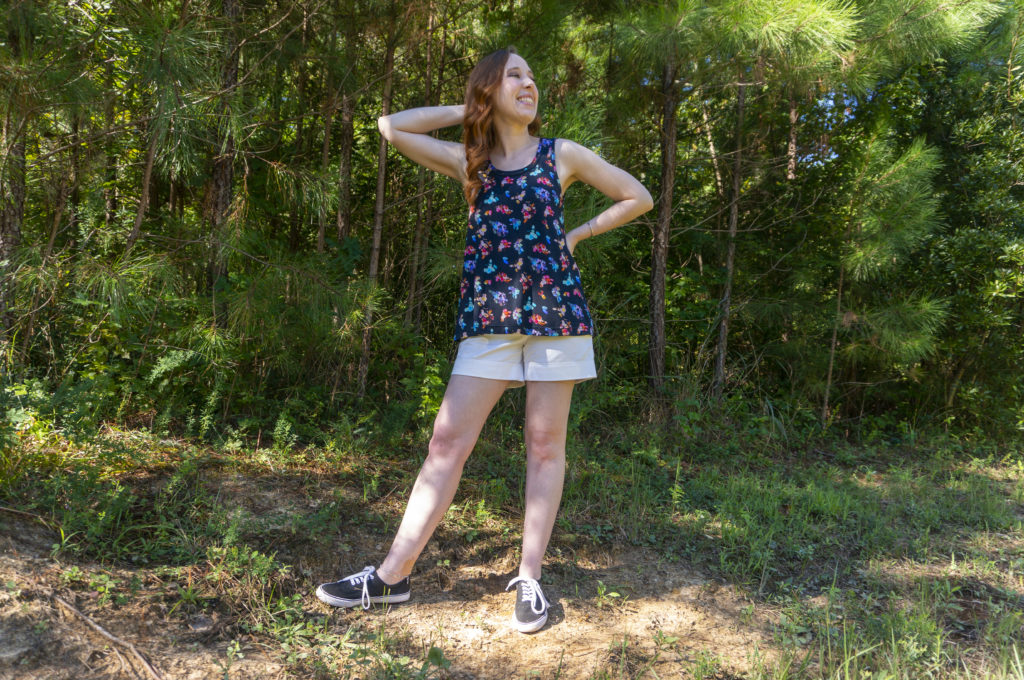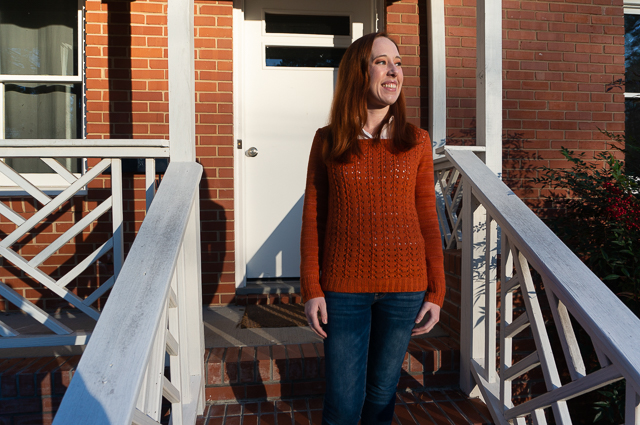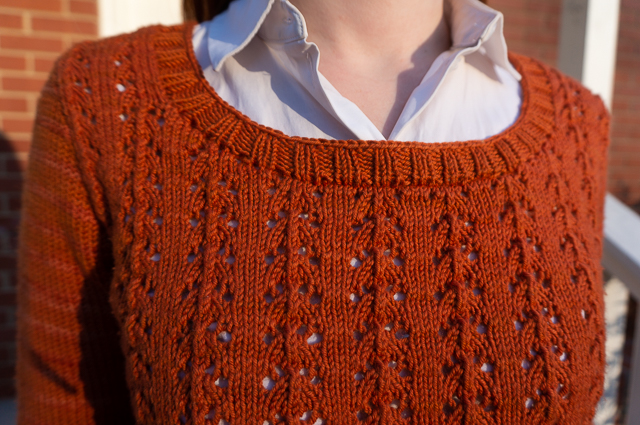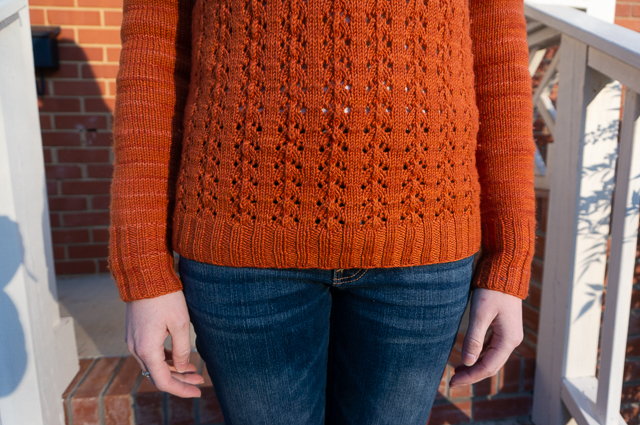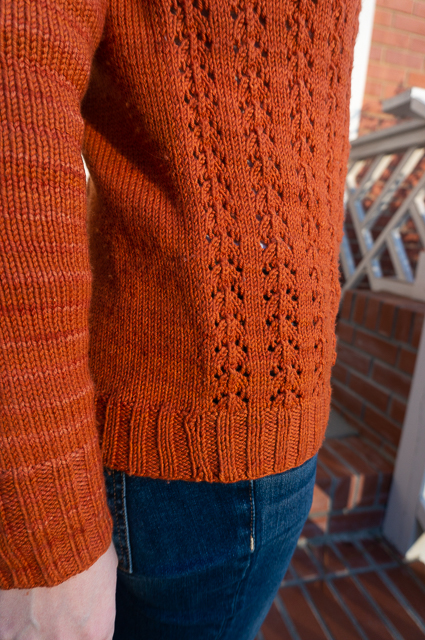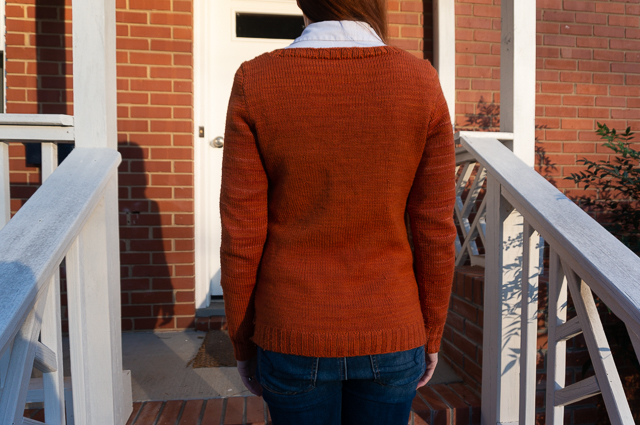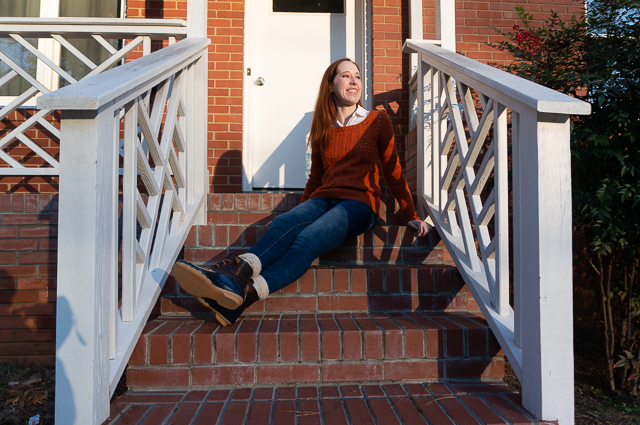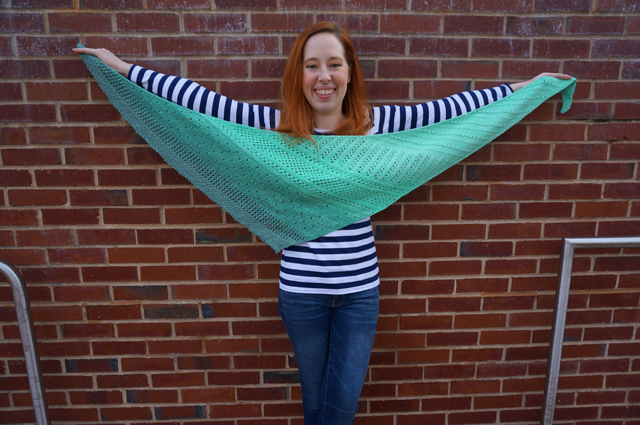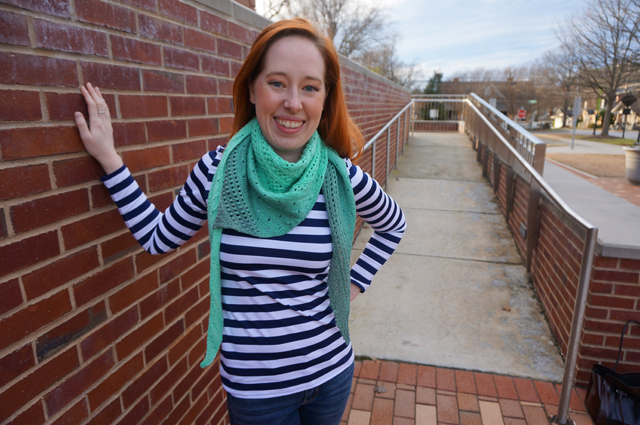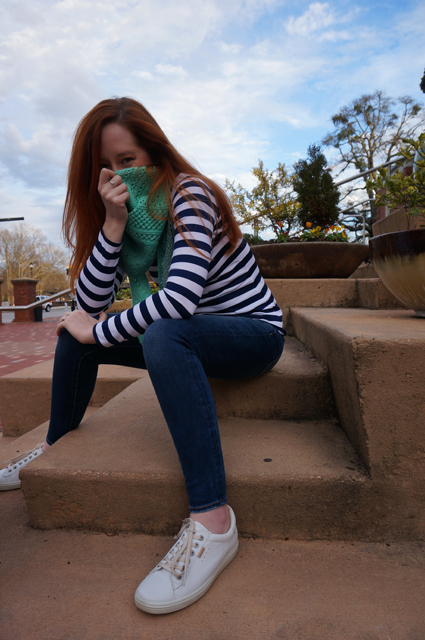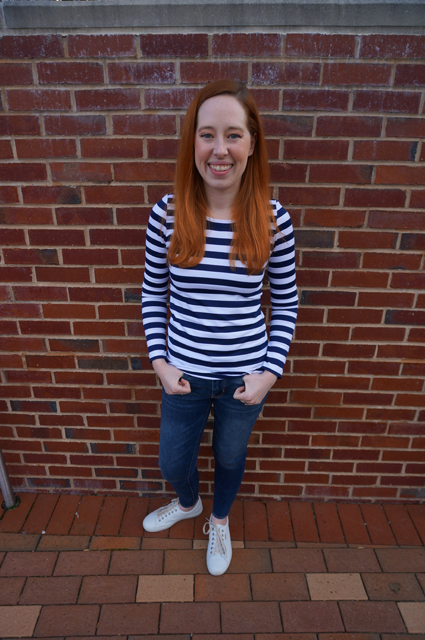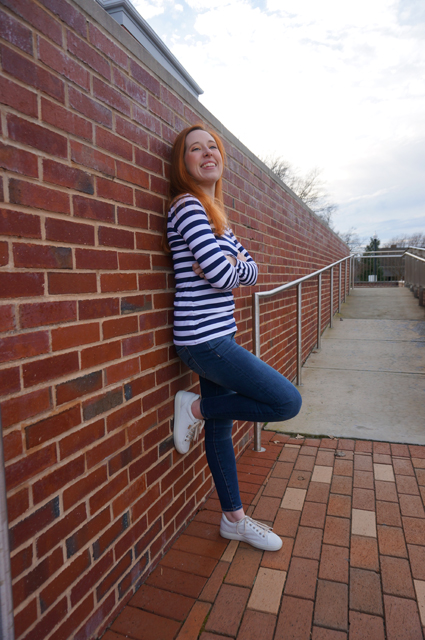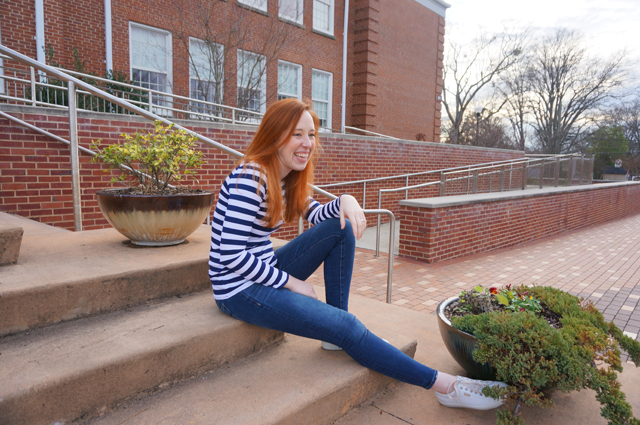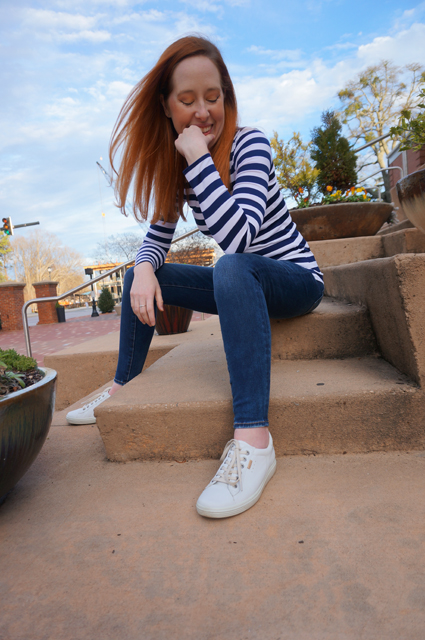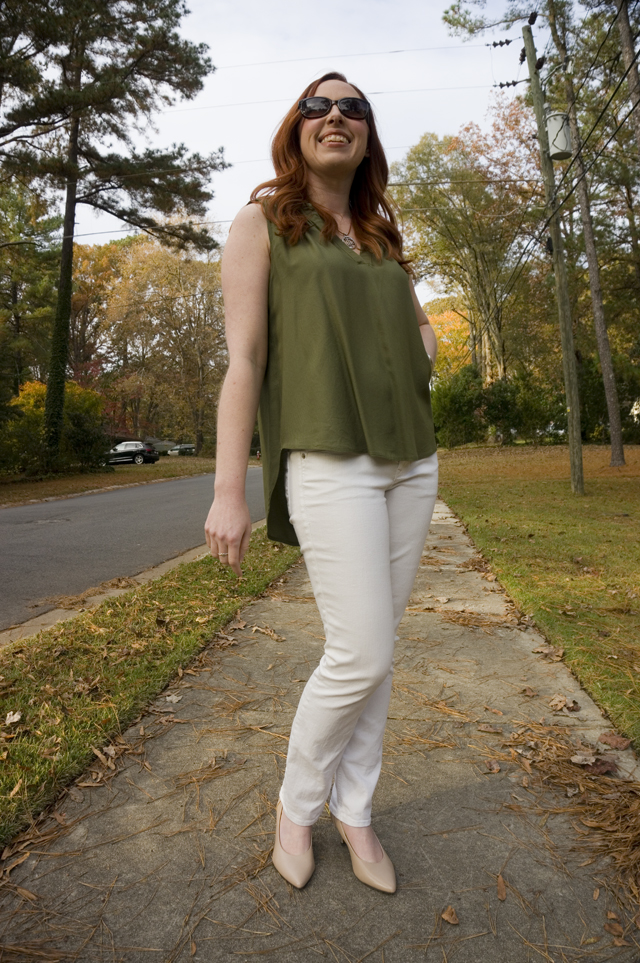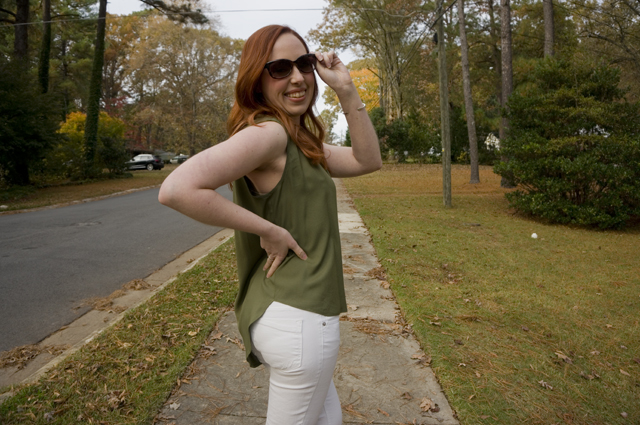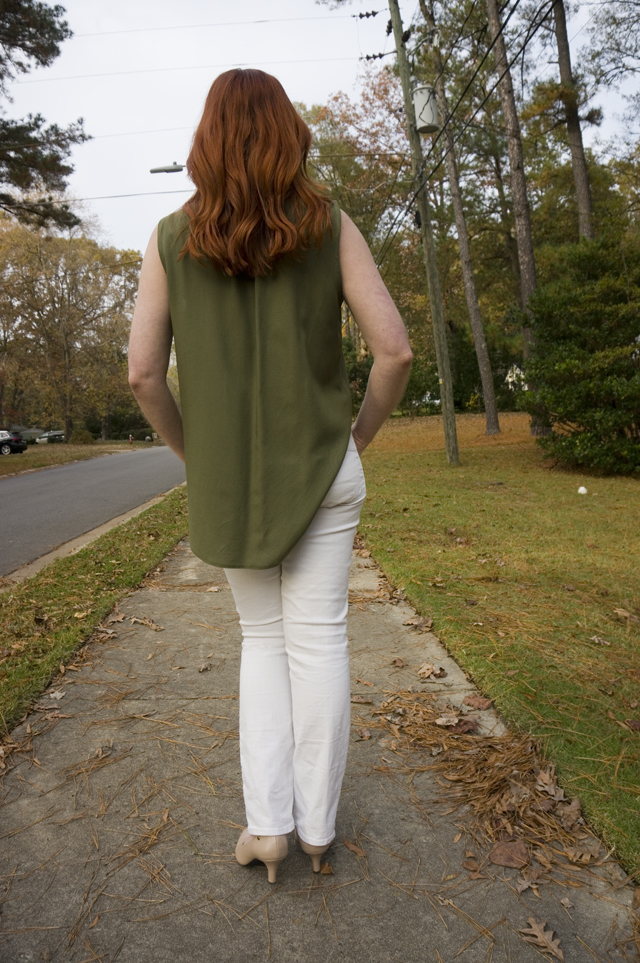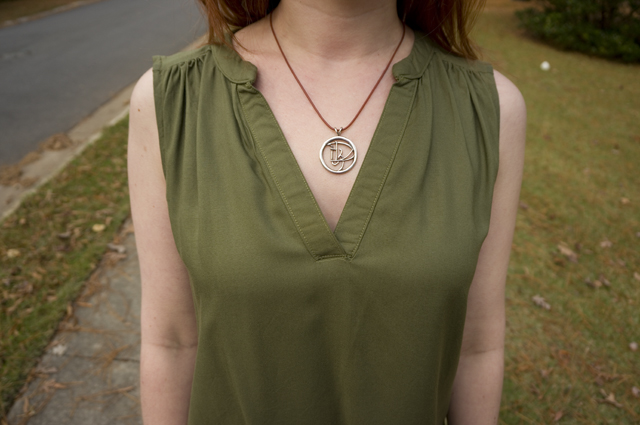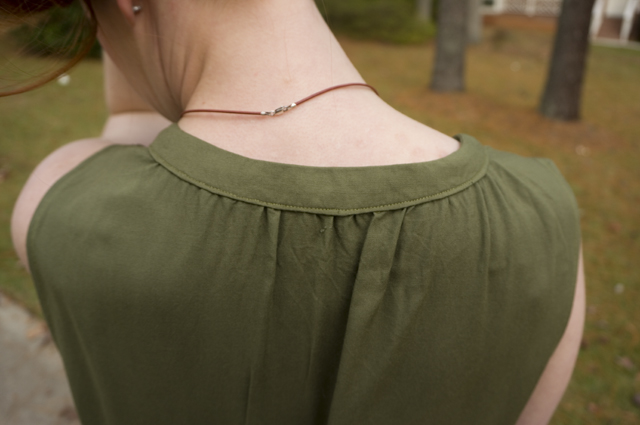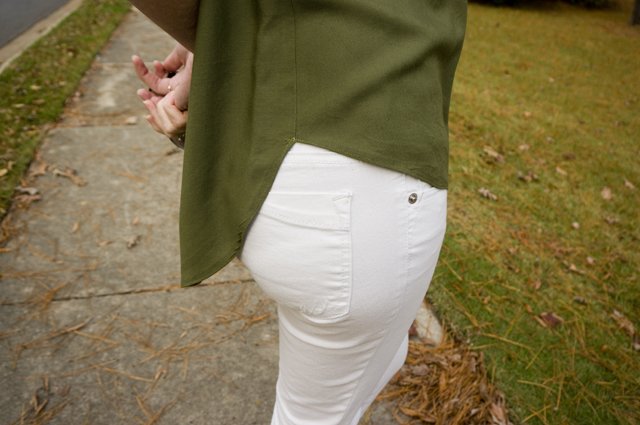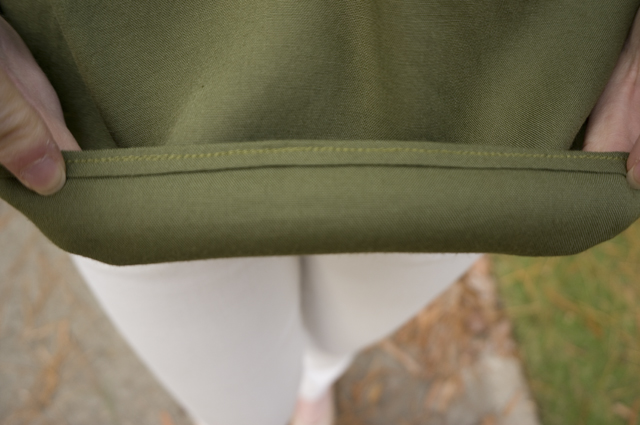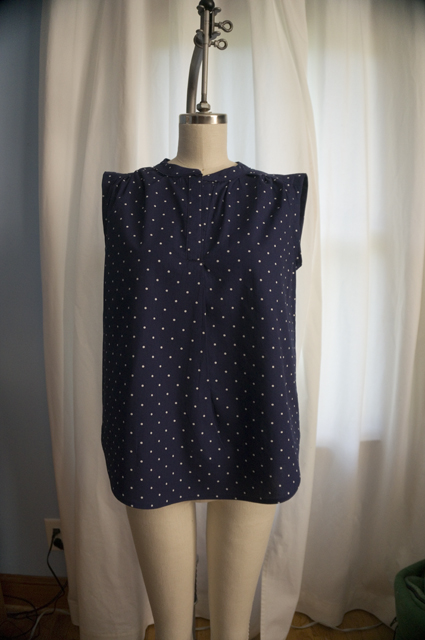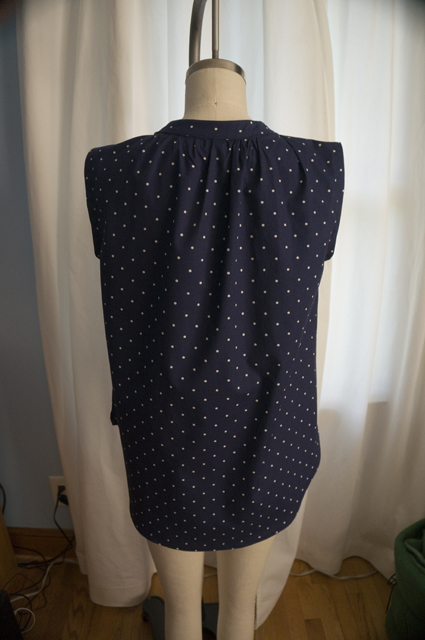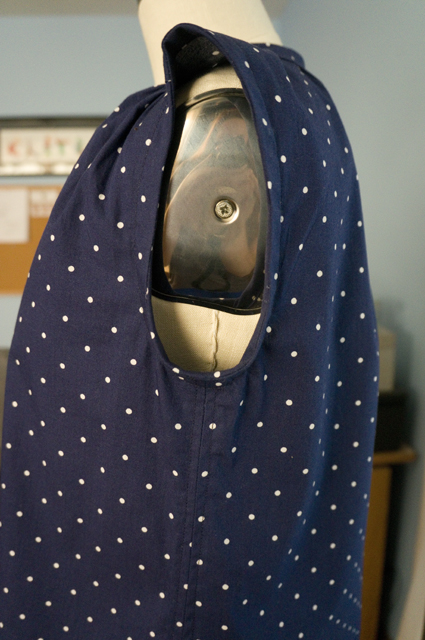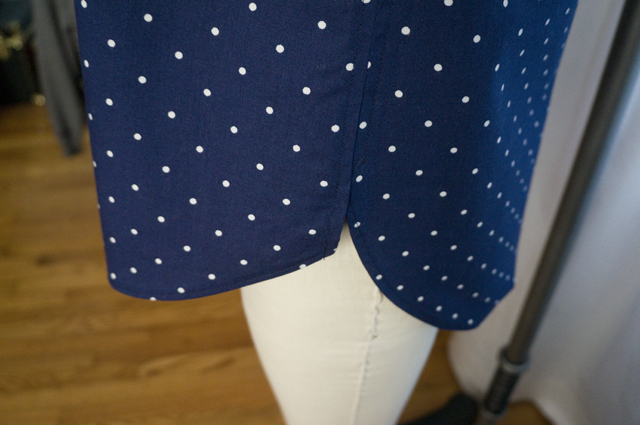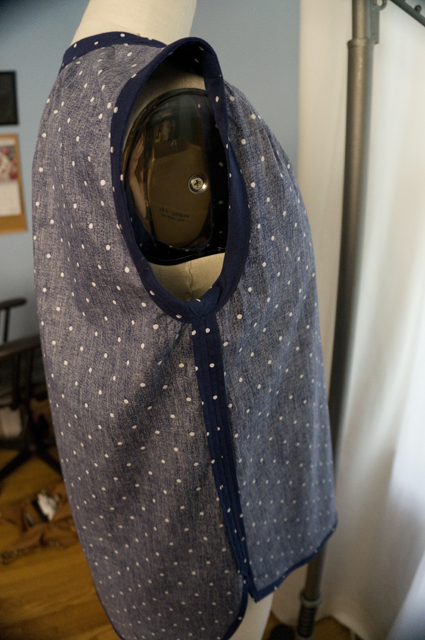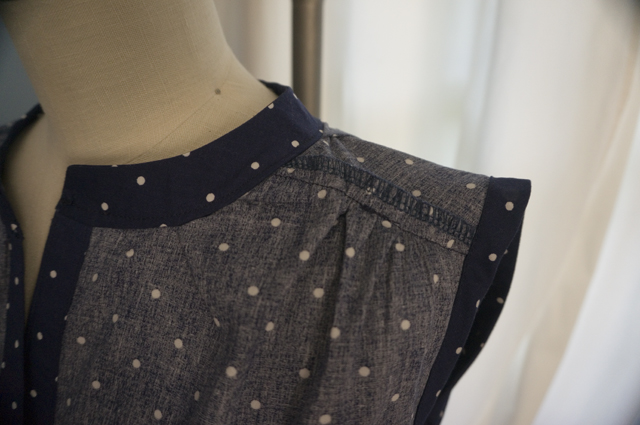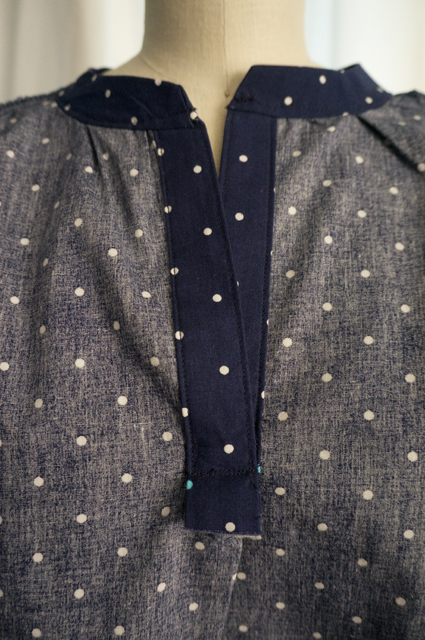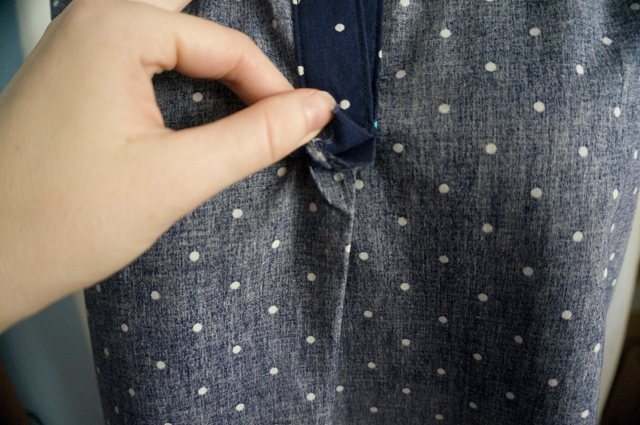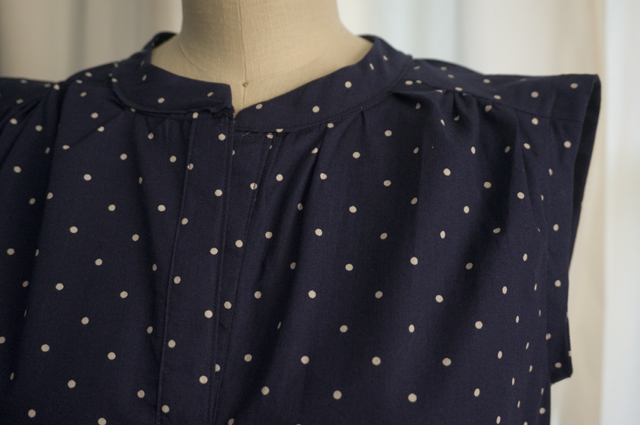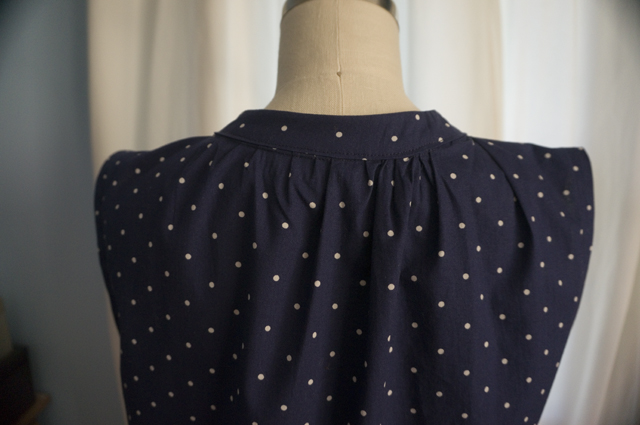
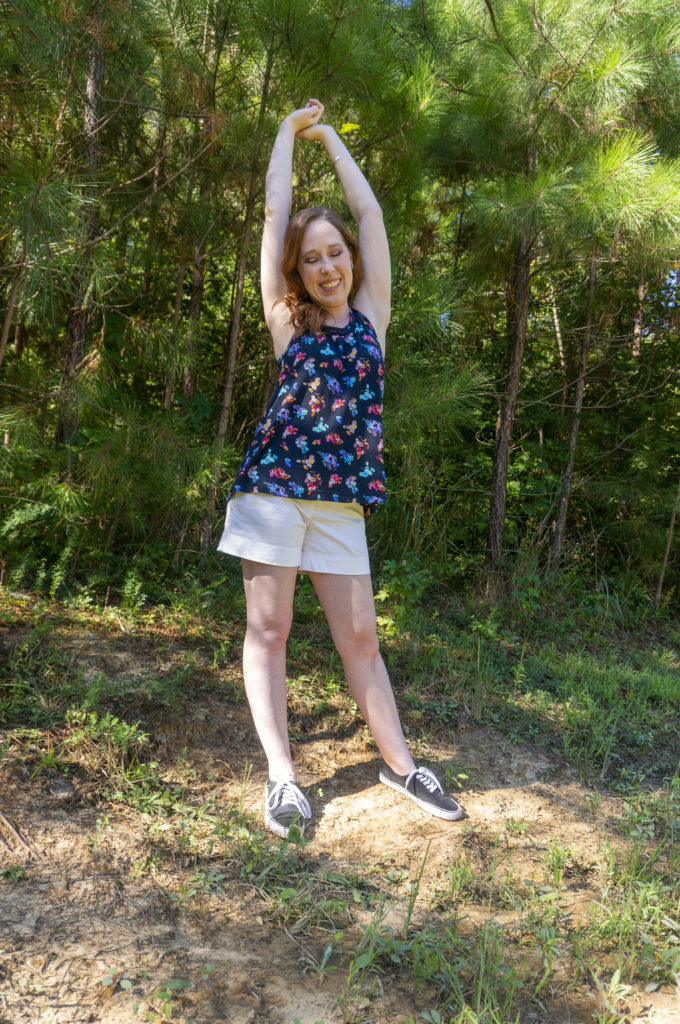

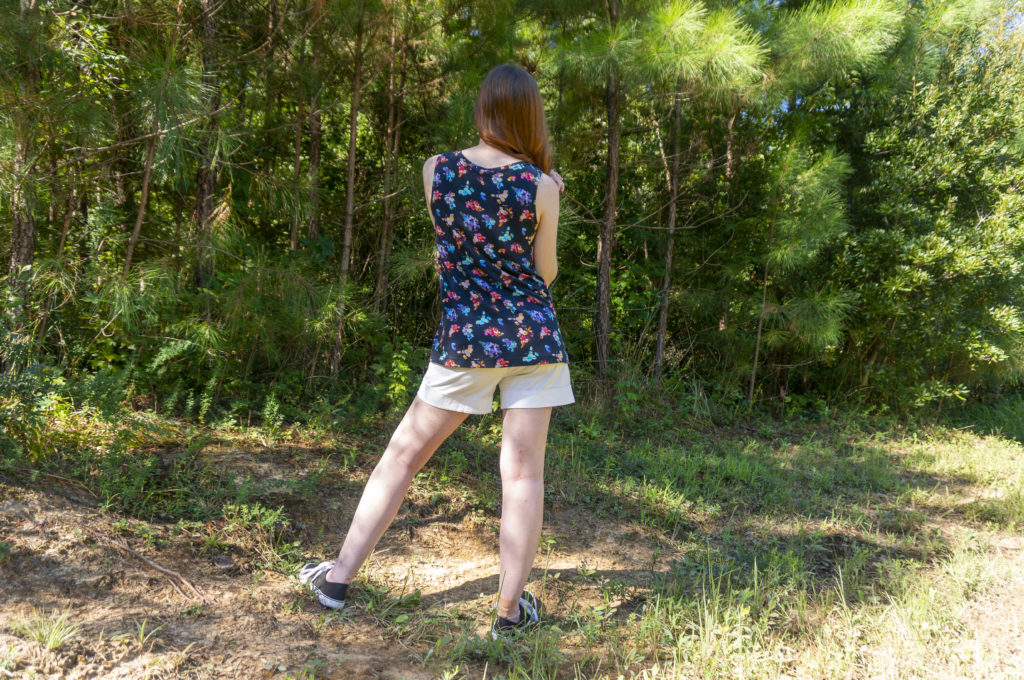
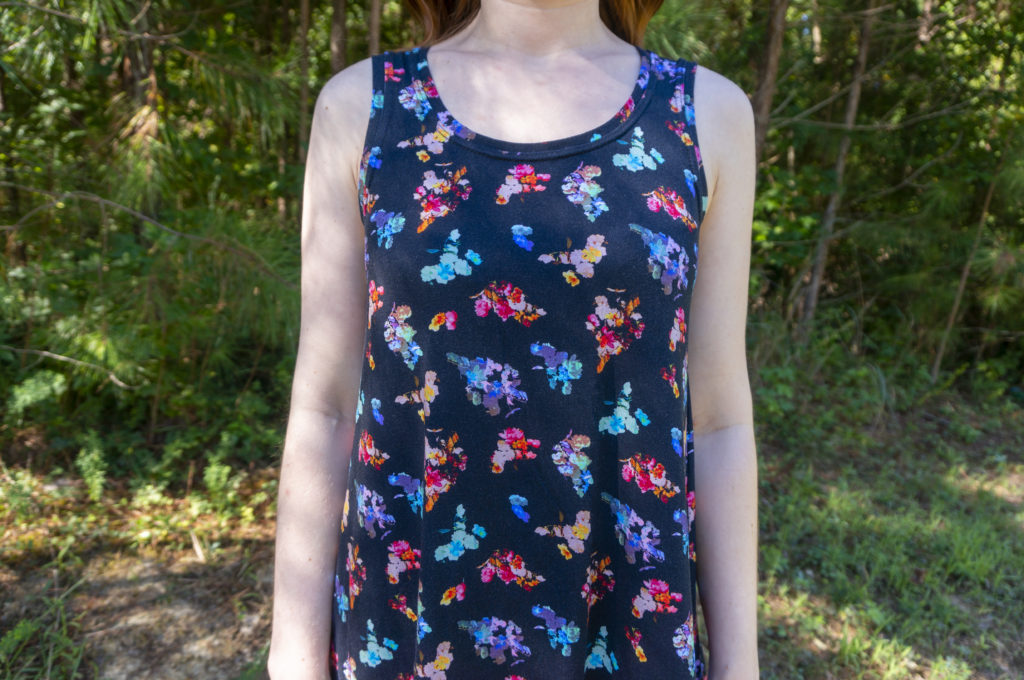
While I was laying out the pieces for my Colette Wren dress, I noticed that I was going to have around half a yard of fabric at the full width and another half yard or so of partial-width pieces. To be honest I was a little surprised by this, since I’d originally planned to turn this yardage into a maxi dress but didn’t have enough length or width to accommodate those pattern pieces. Discovering that I hadn’t had enough fabric for a long dress but did, somehow, have enough fabric for a short dress and a top goes to show that skill with video games is not directly transferable to real life despite how much Tetris I’ve played. Wanting to maximize my use of the remainder and craving another loose top to combat the hot sticky weather, I decided to hack New Look 6285 (a pattern I already own and have used here and here) to make a basic swing tank.
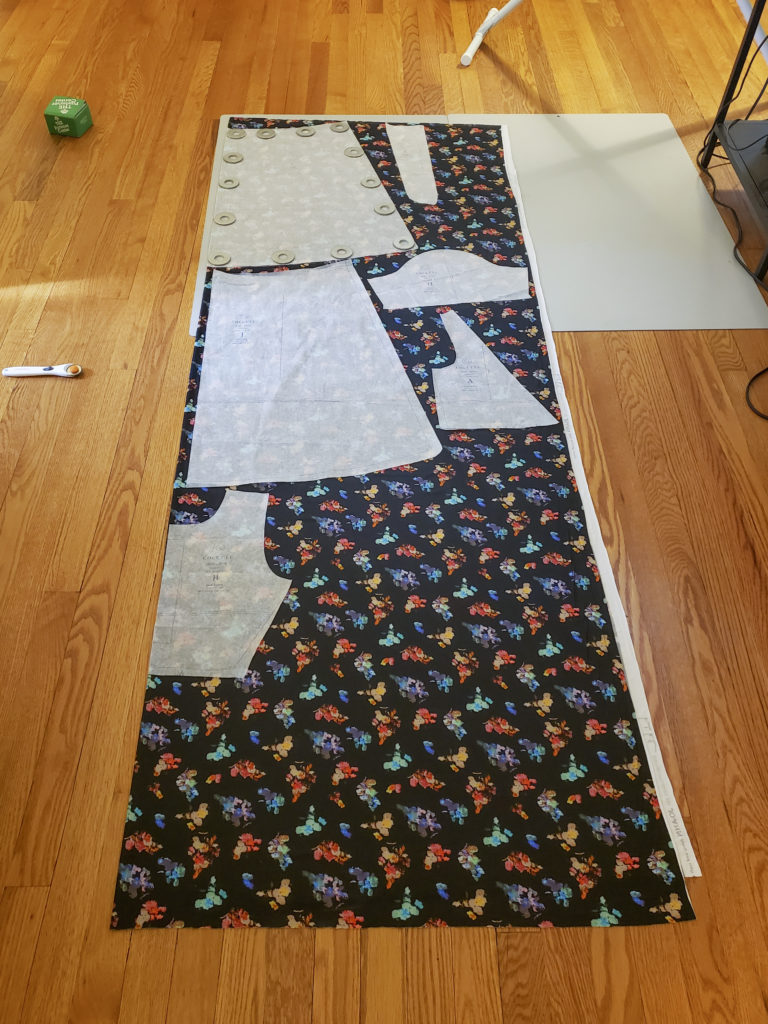
A quick search brought up instructions for turning any knit or woven t-shirt into a swing style on Bernina’s We All Sew blog, provided by the delightful Mary Danielson Perry of Idle Fancy. Because one of the steps is straightening the side seams, I opted to use View A of my pattern since it already has a straighter silhouette and a looser fit overall.
I laid out the original pieces on my fabric, measured to determine the maximum amount I could increase the hem width, and then slashed and spread per the instructions. As you can see below, I ended up making six slashes in the front and six in the back; I spread each slash 1 inch for a total circumference increase of 12 inches.
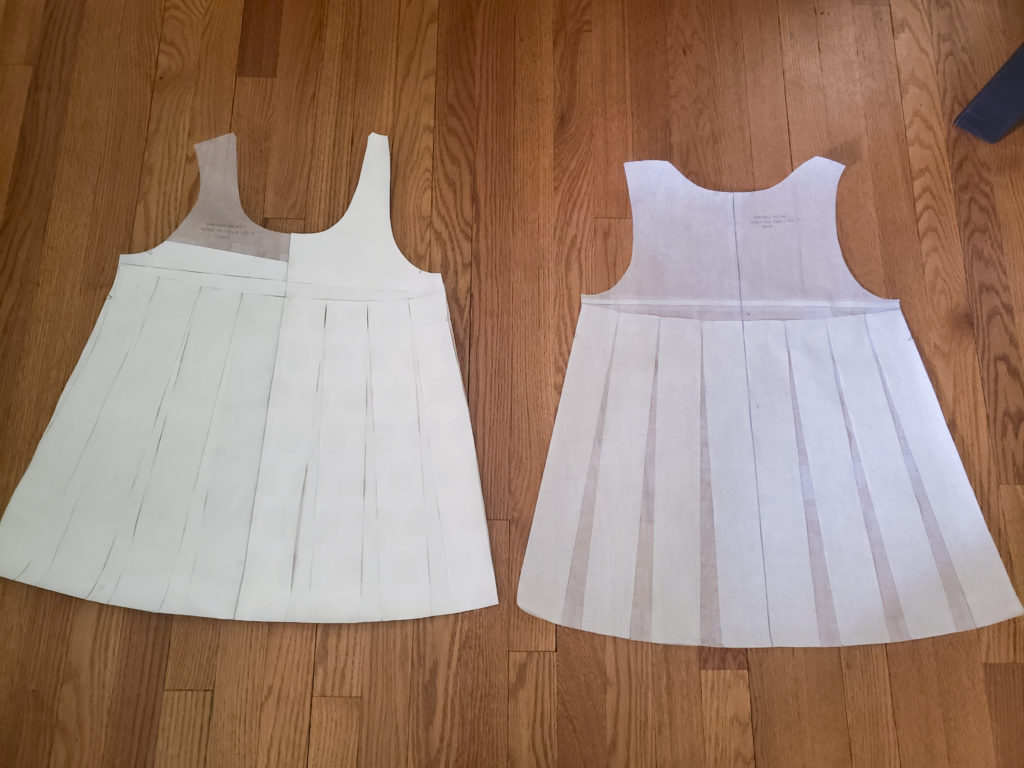
After cutting out the front and back pieces, I didn’t have enough fabric left to cut a neckband and armhole bands on the crossgrain. Luckily this rayon spandex blend has almost as much vertical stretch as it does horizontal stretch, so I cut them on the grain instead. I still ended up piecing together the neckband, but in a dark and patterned fabric it’s not noticeable at all.
As with Wren, I assembled everything on my sewing machine and finished it on my serger. I was out of clear elastic, so I topstitched down the seam allowances at the shoulders in an attempt to stabilize them; time will tell if that makes a difference or not. I also twin needle topstitched around the neck, armholes, and hem.
Not surprisingly, it took about the same of time to sew up as it did to cut the pattern, and the whole thing was completed in two easy afternoons. My only regret is not being able to make it even swingier, but with only a fistful of scraps remaining at the end, I squeezed as much out of it as I could.
This is my fourth consecutive successful sewing project. While none of the projects I’ve undertaken recently are impressive in any way, having a run of wearable garments I’m satisfied with has been a huge boost to my motivation to sew. In the past I’ve struggled with less-than-stellar fit and various sewing mishaps, and it damped my enthusiasm considerably. It’s hard for me to get excited about the process when something that should work doesn’t, and I have an uneasy relationship with the idea of practicing in a hobby where that means either buying cheap fabric to make up a garment I won’t want to wear, or sacrificing fabric I do want to wear to a garment that is ultimately ill-fitting, uncomfortable, or unflattering.
These recent victories, however mundane they may be, have finally got me looking at my stash with excitement and a desire to plan again. I look forward to sharing what I come up with in the weeks to come.
Outfit Details
Top: Modified New Look 6285 | Shorts: Express | Shoes: Mossimo Supply Co. | Bracelet: Unknown/gift

